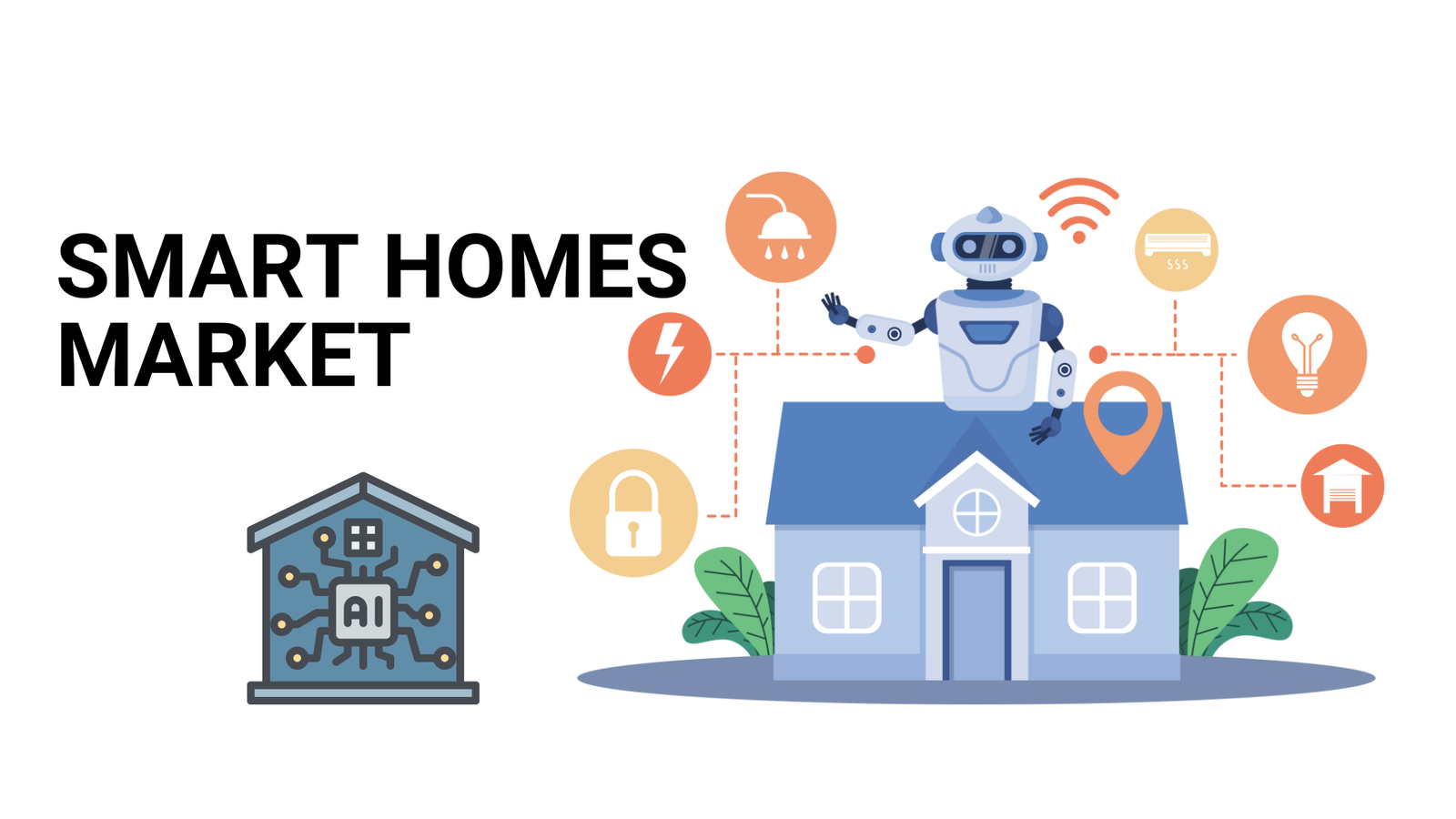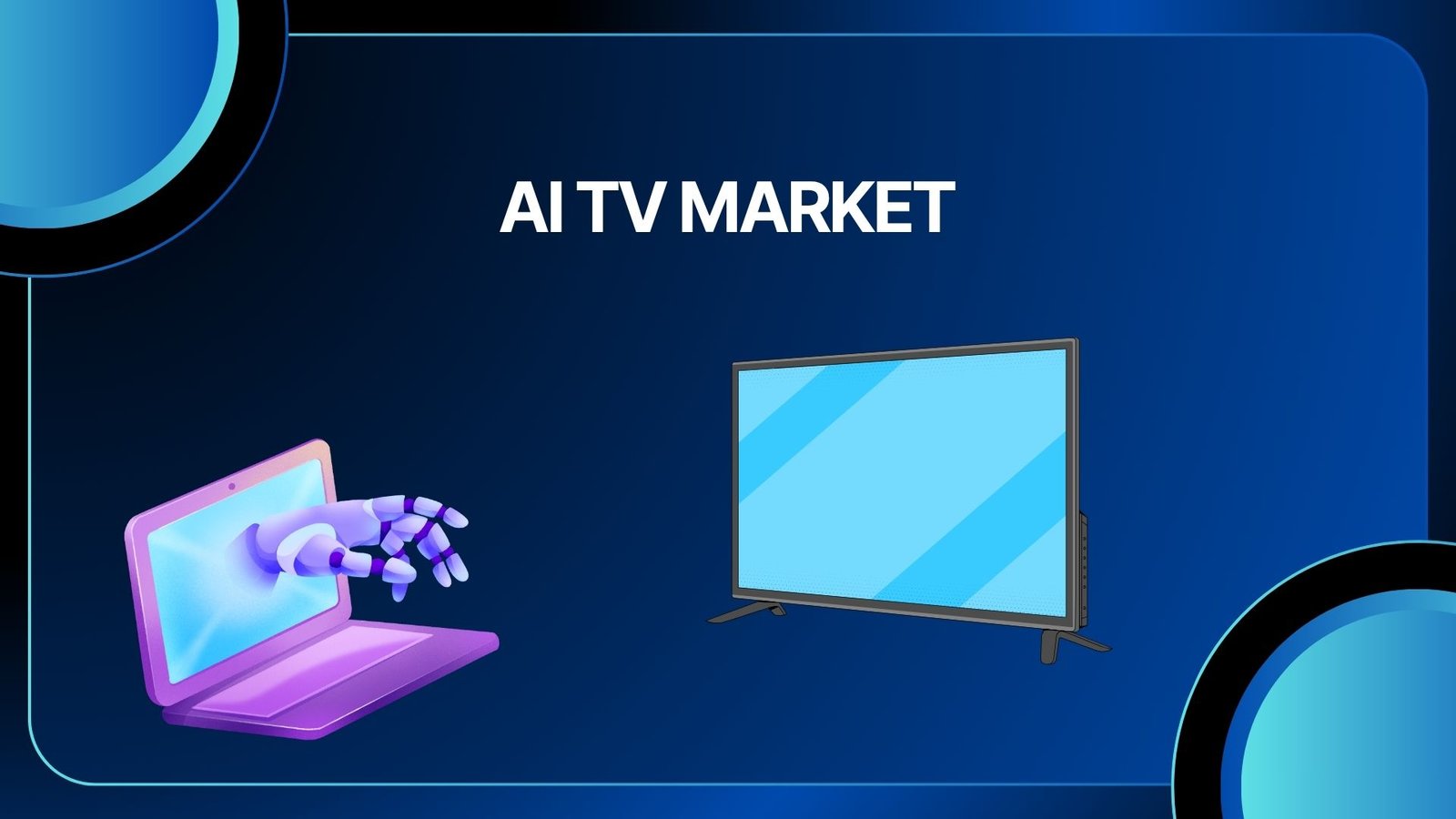Smart Homes Market Poised to Reach USD 503.1 Billion by 2032
Updated · Sep 01, 2025

WHAT WE HAVE ON THIS PAGE
Introduction
According to market.us, The Global Smart Homes Market is expanding rapidly as connected devices and intelligent systems transform residential living. Valued at USD 132.2 Billion in 2023, the market is expected to reach nearly USD 503.1 Billion by 2032, registering a CAGR of 16.8% during the forecast period. Growth is being fueled by increasing adoption of IoT-enabled appliances, rising consumer focus on energy efficiency and home automation, and the growing integration of AI-powered assistants that enhance convenience, security, and overall living experiences.

According to recent research conducted by MediaPost and the Consumer Technology Association (CTA), the U.S. smart homes market is witnessing strong adoption, with 69% of households owning at least one smart device. Among these, about 12% of households – equivalent to nearly 22 million homes – use multiple smart home products, underscoring the growing trend of integrated connected living. This momentum places the United States at the forefront of global smart home adoption, setting a benchmark for other regions.
Ownership levels vary across product categories, with audio-video devices leading at 56% penetration, followed by home networking (34%), home security (33%), energy management (21%), and smart lighting (15%). Specific product adoption further illustrates consumer preferences: smart entertainment devices are used by 45% of households, while 26% own wireless speakers without voice assistants and 25% have smart speakers with assistants. Security-related products are also gaining ground, with 17% adoption for both smart smoke detectors and monitored security systems, alongside 14% for smart thermostats and 12% for video doorbells.
The broader outlook highlights continued expansion. By 2023, about 15% of households worldwide were expected to adopt at least one smart device, pointing to steady global growth. Shipment volumes further reinforce this trajectory, with smart home devices projected to reach 815 million units globally this year and climb to 1.4 billion units by 2025. These figures emphasize the sustained demand for convenience, efficiency, and security in modern living environments, positioning smart homes as a central component of digital lifestyles.
Key Insight Summary
- The Global Smart Homes Market will rise from USD 132.2 Billion in 2023 to about USD 503.1 Billion by 2033, reflecting a 16.8% CAGR.
- Security and access control systems held the leading position, capturing the largest share of the market.
- Adoption is accelerating in new construction projects, where smart home appliances are increasingly integrated.
- Asia Pacific led the global market with a 32.8% revenue share, establishing itself as the top regional contributor.
Driver Factor
One key driver for the smart home market is the growing adoption of Internet of Things (IoT) and artificial intelligence (AI) technologies. These technologies improve the functionality and connectivity of home devices, making daily tasks easier and more efficient for users. As consumers seek convenience and control over their living environments, the appeal of smart home systems increases steadily. Advancements in technology also lead to more user-friendly devices, encouraging broader adoption.
Additionally, rising awareness about energy efficiency fuels demand for smart home products such as smart thermostats and lighting systems. These devices help homeowners reduce energy consumption and utility bills, appealing to eco-conscious consumers. The expanding availability of high-speed internet and smartphones supports seamless device integration, further driving market growth.
Restraint Factor
A significant restraint for the smart home market is growing concerns about privacy and security. Since smart homes rely heavily on internet connectivity, they are vulnerable to cyberattacks that may expose personal information. This risk of hacking and data breaches remains a strong barrier to wider consumer acceptance. Users worry about the security of their connected devices, especially those involving surveillance and personal monitoring.
The cost associated with smart home technology also restrains market growth. Advanced devices often require expensive setup, maintenance, and repairs, making them less accessible to middle-income consumers. Installation complexities and the need for continuous, high-quality internet further add to the overall expense, limiting adoption for price-sensitive segments.
Opportunity Analysis
One significant opportunity in the smart home market is the expansion into emerging markets, particularly in Asia Pacific. Rapid urbanization and a growing middle class in countries like China and India are creating new demand for smart home solutions. Governments in these regions are investing in smart city projects, which support the integration of smart homes into broader urban infrastructure.
Furthermore, the development of integrated smart home ecosystems offers a promising growth area. Consumers increasingly prefer seamless experiences where multiple devices work together harmoniously, such as combining security systems, energy management, and entertainment appliances. Companies that provide comprehensive, interoperable solutions stand to benefit from rising consumer expectations for convenience and connected living.
Challenge Analysis
A major challenge faced by the smart home market is the technical complexity surrounding device integration. Consumers frequently encounter difficulties when trying to connect products from different manufacturers into a unified system. This interoperability issue can discourage potential buyers who expect simple, plug-and-play solutions.
Moreover, smart home technology requires ongoing updates and maintenance to stay secure and functional, which can overwhelm users unfamiliar with technological troubleshooting. Addressing these challenges requires improving device compatibility standards and simplifying user interfaces to make smart home adoption more accessible to a wider audience.
Key Market Segments
By Technology
- Wireless
- Wired
By Products
- Security and Access Control
- Smart Locks
- Security Cameras
- Video Door Phones
- Remote Monitoring Software & Services
- Others
- Lighting Control
- Relays & Switches
- Smart Lights
- Dimmers
- Occupancy Sensors
- Others
- Entertainment Devices
- Streaming Devices
- Sound bars and Speakers
- Smart Displays/TV
- HVAC
- Smart Vents
- Smart Thermostats
- Sensors
- Others
- Home Appliances
- Smart Water Heaters
- Smart Vacuum Cleaners
- Smart Washing Machines
- Smart Kitchen Appliances
- Cooktops
- Dish Washers
- Microwave/ovens
- Refrigerators
- Other Products
By Application
- New Construction
- Retrofit
Top Key Players in the Smart Homes Market
- Samsung Electronics Co.Ltd.
- LG Electronics Inc.
- Sony Corporation
- Amazon.com Inc.
- Philips Lighting B.V.
- Robert Bosch GmbH
- Siemens AG
- Schneider Electric SE
- Honeywell International Inc.
- ABB Ltd
- Google Nest
- Other Key Players
Source : https://market.us/report/smart-homes-market/
Sources

After graduating in Electrical Engineering, Maitrayee moved into writing after working in various technical roles. She specializes in technology and Artificial Intelligence and has worked as an Academic Research Analyst and Freelance Writer, focusing on education and healthcare in Australia. Writing and painting have been her passions since childhood, which led her to become a full-time writer. Maitrayee also runs a cooking YouTube channel.











